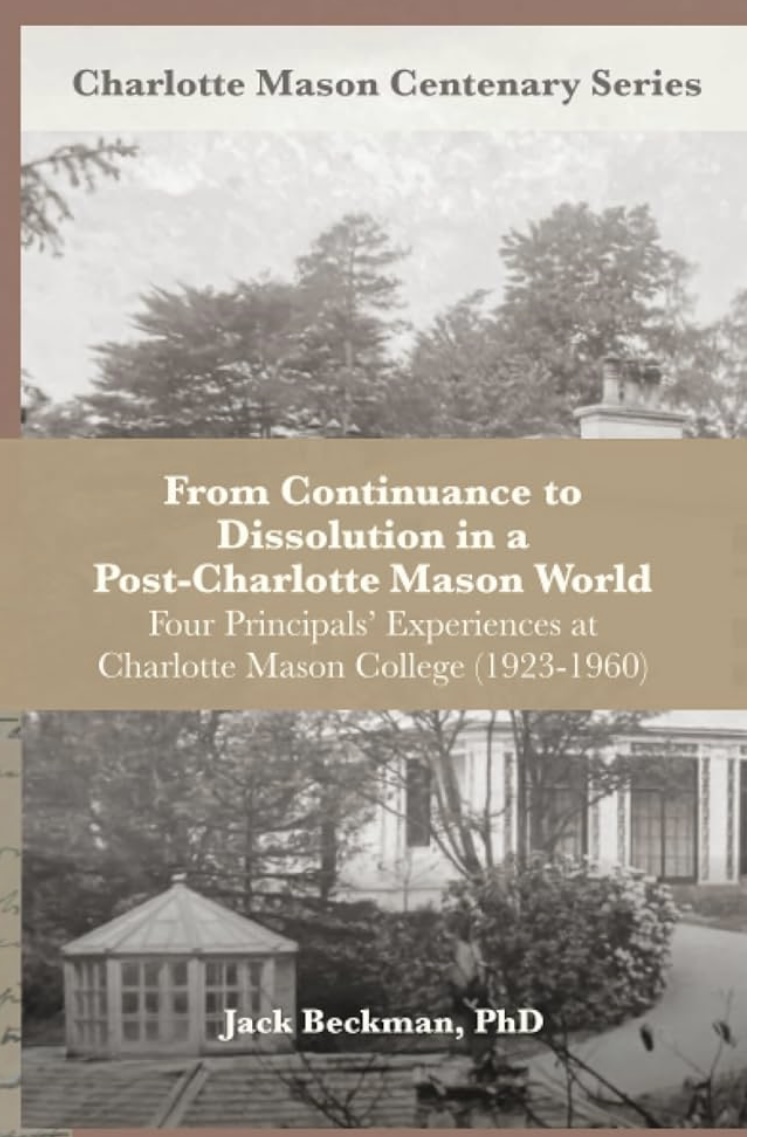February 20, 2024
From Continuance to Dissolution in a Post-Charlotte Mason World with Dr. Jack Beckman

Introduction
The Charlotte Mason Centenary Series, a multi-authored monograph series commissioned in connection with the Charlotte Mason Centenary, is designed to highlight and explore the continuing educational and leadership relevance of the late 19th-century British educationalist Charlotte Mason (1842-1923) through the collective contributions of The Armitt Museum and Library, the University of Cumbria, the Charlotte Mason Institute, and other scholars and practitioners worldwide.
This post is included in a series on the monographs. Each post gives a snapshot of the author's motivation for writing, the various topics and content of each monograph, and suggestions for who might benefit most from the work.
Interview
Dr. Jack Beckman authored the monograph titled From Continuance to Dissolution in a Post-Charlotte Mason World: Four Principals’ Experiences at Charlotte Mason College (1923-1960). If Charlotte Mason (1842–1923) was right, then education is indeed a life, as Jack has spent over 40 years under the regulus and patterns of teaching and learning—initially as an early childhood educator in the classroom, then as an educational leader, and finally as Professor of Elementary Education at Covenant College. Each of these contexts has allowed him to work with students, teachers, and parents on various levels involving instructional pedagogy, curriculum development, and teacher professional learning. Jack is a Research Fellow at the University of Cumbria, UK, and has the honor of working with a team of colleagues to develop a research agenda on the life and work of Charlotte Mason; interestingly enough, the University of Cumbria is the former Charlotte Mason College, the site of teacher training for her distinctive model of pedagogy. His team is part of a vision to rekindle Mason’s legacy in the UK.

What motivated you to join this research project?
Dr. Jack Beckman: I think it is a key proposition that we forward think Charlotte Mason into the 21st century without losing the historical perspective that unfolds its foundations. As an historian of education and an instructional practitioner, I believe the voices and traces of the historical past connect us to the lessons and lives of significant thinkers.
Why did you pick your topic?
Jack: I am intrigued by models of school leadership, especially as they relate to instructional practice in the classroom. The life and work of subsequent Principals of the College allowed me an evidence-based glimpse into their work with intending teachers within the PNEU and the impact of the training over time.
What was the most interesting thing you discovered during your research and writing?
Jack: The demise of the College was not necessarily from philosophical or pedagogical infighting over Mason's model (although there was that dimension) but mainly due to outside influences beyond the control of the College's leadership - the expansive growth of the English State school system with its recognized teacher certification, salary, and benefits paralleling the diminishing PNEU school movement because to could not compete.
What one or two ideas do you most hope people take away from reading your monograph?
Jack: Universalizing ideas do not diminish over time but find new expression throughout the ages.
Who do you think should (especially) read your monograph?
Jack: This monograph would benefit school leaders and educational historians.
Final Thoughts
Jack: I enjoyed my affiliated role as Visiting Scholar during the Summer of 2023, where I was able to complete a draft of another work entitled "They were all together as one." - The Children's Gathering in Winchester (1912): Innovation and Congregation in the Parents' Union School of the Charlotte Mason Movement.

From the Text
“It might be said that the training at the House of Education under the tenure of Miss Parish was one in which time had stood still since Mason’s death.” (p.23)
“What Miss Parish had resisted vehemently during her 11 years as principal materialised just as strongly in the 3 brief years of Miss Cholmondeley’s tenure.” (p. 34)
“A combination of forceful personality, pragmatism, and compromise hallmarked Miss van Straubenzee’s leadership over the College—one in which the overriding concern was for the continuing existence of the institution at any cost” (p. 36)
“Miss Hardcastle became the final CMT to fill the role of principal, and under her administration the College fully assimilated into the State machinery within 6 years of employment.” (p. 55)

Jack's monograph is available in print as a physical or digital copy.

